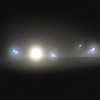 This is the first of two collaborative albums between Jim O'Rourke and Christoph Heemann and represents some stunning spaced-out collage work by both artists. While it lacks the variance of Vol. 2, this particular work is a master class in using a very limited palette of sounds to create a massive emotional impact. The duo are almost painterly in their craft, shading and blending the different tones into each other rather than allowing any discrete patterns to emerge.
This is the first of two collaborative albums between Jim O'Rourke and Christoph Heemann and represents some stunning spaced-out collage work by both artists. While it lacks the variance of Vol. 2, this particular work is a master class in using a very limited palette of sounds to create a massive emotional impact. The duo are almost painterly in their craft, shading and blending the different tones into each other rather than allowing any discrete patterns to emerge.
- Administrator
- Albums and Singles
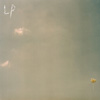 For his second solo effort, Deerhunter's Lockett Pundt abandons his experimental tendencies and throws himself wholeheartedly into making chiming, sun-dappled guitar pop.  On one hand, this album is much more focused, hook-filled, and filler-free than The Floodlight Collective.  On the other hand, he absolutely should not have done that, as he was much more compelling before.
For his second solo effort, Deerhunter's Lockett Pundt abandons his experimental tendencies and throws himself wholeheartedly into making chiming, sun-dappled guitar pop.  On one hand, this album is much more focused, hook-filled, and filler-free than The Floodlight Collective.  On the other hand, he absolutely should not have done that, as he was much more compelling before.
While this album is very different from its predecessor, it is easy to see where Lotus Plaza's change in direction originated: the best moments on Floodlight (like "Red Oak Way") tended to be the poppiest, most propulsive ones, so Spooky Action at a Distance attempts to replicate that success with every single song.  Unfortunately, there is a substantial problem with that logic, as Pundt is not a strong enough songwriter or emotive enough vocalist to quite make that work.  The Floodlight Collective's poppier moments worked only because his hazy, mumbled songs were propped up by some extremely cool textures, effects, and inventive ideas.  Spooky Action doesn't offer much in those regards at all, so the songs have to stand entirely on Lockett's melodies and beats.  Sometimes everything comes together pretty well, like the stomping, tambourine-heavy beat and strummed harmonics on "Out of Touch," but he more often misses the mark on at least one piece of the puzzle.  Lockett is simply not playing to his strengths here–he has definitely proven that he can do some very likable and unusual things when he is appropriately armed with effects pedals and processing techniques.  Choosing to play simple, fairly straightforward rock seems to be a pretty ill-advised move.
Sadly, there is also another fundamental issue here: even the album's good moments are homogenized into bland lifelessness by the production–the dynamics and character seem to have been squeezed out.  There is little bite, meat, or gravitas to this album at all, just endless vaguely pleasant, polite, detached-feeling sameness.  The low-end is probably the most lamentable casualty, but the problem is most acutely apparent when Pundt unleashes a rare flurry of dissonance–what should be attention-grabbing crescendos wind up being too smoothed-over and devoid of real presence to make much impact at all (though the howling riff in "White Galactic One" is a notable exception).  It's all very frustrating:  Pundt clearly worked very hard on his songwriting and came up with some appealing hooks and loads of nice ringing arpeggios, yet his efforts rarely amount to anything particularly substantial or distinctive.  I suppose this album arguably succeeds as some sort of summery, shoegaze-damaged indie rock road music, but it is too gutted and predictable to hold up to attentive, sustained listening.  While there are still admittedly a few pretty good songs here (like "Strangers" and "Black Buzz"), none of them come particularly close to reaching the highs of Lotus Plaza's debut.  This is a definite step backwards.
Samples:
 
Read More
- Administrator
- Albums and Singles
 Time of the metronomic kind gives shape to music. It defines the tempo of a song, fixes when sounds should and shouldn’t be played, and determines mood as surely as major and minor keys do. On 2 Seconds/B minor/Wave, Michael Pisaro and Taku Sugimoto reverse that relationship and employ sound to illuminate the physical shapes and vaulted spaces of time. The product of independent performances, this album comes together in an astonishingly cohesive way, meaning that besides being a perspective-bending and aleatoric success, it is also a beautiful 60 minutes of music. Listen closely or let it pass over you, either way it furnishes many rewards.
Time of the metronomic kind gives shape to music. It defines the tempo of a song, fixes when sounds should and shouldn’t be played, and determines mood as surely as major and minor keys do. On 2 Seconds/B minor/Wave, Michael Pisaro and Taku Sugimoto reverse that relationship and employ sound to illuminate the physical shapes and vaulted spaces of time. The product of independent performances, this album comes together in an astonishingly cohesive way, meaning that besides being a perspective-bending and aleatoric success, it is also a beautiful 60 minutes of music. Listen closely or let it pass over you, either way it furnishes many rewards.
Pisaro and Sugimoto pull back the curtains on their first collaborative record with the pellucid ring of a sine wave and the clink of some unidentifiable objects. This sound reaches into the room and drifts like smoke into the corners, where it finally resonates and settles like a thought. And then the next glassy wave of sound rolls out behind it and the show has begun. What follows are three pieces that were recorded separately, in Japan and California, and combined afterward. Beyond agreeing to record without hearing each other, Pisaro and Sugimoto came up with some basic rules to help guide their performances. They decided that each song would last exactly twenty minutes, and that each would be shaped by a simple concept, which each title explains very well. "2 Seconds" indicates a unit of measure or pulse from which to begin, "B Minor" dictates a key, in which Michael provides the melody and Taku the harmony, and "Wave" suggests just a wave, whatever that might mean to them as performers. All else was left up to chance, including which instruments were to be used.
The resulting pieces are quiet and surprisingly accessible, filled with melody, and punctuated by seamless bouts of motionlessness and silence. These silences aren’t so long or frequent that they dominate the music, but they do alter its sense. On "2 Seconds," with Taku regularly tapping objects together and sometimes utilizing what sounds like a power drill, Pisaro drops his tones into the near-silence the way someone might drop pebbles into a pond. Dropped one at a time, these tones bloom like a flower and give shape to the space and time into which they fall, in just the same way that a dropped pebble would send ripples across a pond’s surface. Because a sine tone’s shape and duration are wound together so inextricably, and because Pisaro and Taku’s performances work so well together, the music ends up giving a tangible shape to time. As Michael increases the complexity and sends more tones crossing and quivering into each other, the normal sense of time also increases in complexity, until it finally explodes. Minutes and seconds cease to be adequate indicators of its quality, and things like density, color, and emotion take their place. And listen closely, because even Taku’s seemingly regular contributions work to subdivide and mince time’s typical forward crawl.
"B Minor" is also a quiet and inward song, and thanks to the silences and the sense of space that infuse its melodic and harmonic phrases, it too feels like a song that is in control of time, rather than the other way around. But, its main attraction isn’t this feat, it’s the almost impossible sympathy that shows up in Michael and Taku’s playing that takes center stage. Their performances are so complementary that it’s hard to believe they were recorded in isolation. Pisaro and Sugimoto lace consonant harmonies with bouts of dissonance, half-bluesy progressions, and broken rhythms as if they were listening to (or maybe even watching) one another very closely. In places, the affinity is so strong that the music sounds composed. Of course, their restrained playing goes some way in explaining why two such performances might blend so well, but it doesn’t account for the almost impossible rapport they so obviously share.
The closer, "Wave," ventures into entirely different territory, with Pisaro providing field recordings of waves from the California coast and Sugimoto laying down a time-freezing drone. Here, the sympathy they built over the course of the album breaks down a little. Both their contributions sound like they could be standalone pieces, and besides the obvious conceptual connection, there isn’t much going on in the way of integration. Instead, there remains the still hum of Sugimoto’s drone and the surge of the ocean. Whether they contrast or not is left entirely, and appropriately, up to chance and whoever is listening. Once they both stop, the album ends and the curtains close, but that more robust sense of time sticks around for much longer, as does the beauty of the entire record.
samples:
 
Read More
 This is the first of two collaborative albums between Jim O'Rourke and Christoph Heemann (the second instalment is also reviewed this week by Anthony D'Amico) and represents some stunning spaced-out collage work by the two artists. While it lacks the variance of Vol. 2, this particular work is a master class in using a very limited palette of sounds to create a massive emotional impact. The duo are almost painterly in their craft, shading and blending the different tones into each other rather than allowing any discrete patterns to emerge.
This is the first of two collaborative albums between Jim O'Rourke and Christoph Heemann (the second instalment is also reviewed this week by Anthony D'Amico) and represents some stunning spaced-out collage work by the two artists. While it lacks the variance of Vol. 2, this particular work is a master class in using a very limited palette of sounds to create a massive emotional impact. The duo are almost painterly in their craft, shading and blending the different tones into each other rather than allowing any discrete patterns to emerge.
- Administrator
- Albums and Singles
 The artists featured on this compilation aim to merge Costa Gröhn’s field recordings of a church and of a funfair to create a unique document representing Hamburg. The majority of the artists featured here struggle to create much worth listening to as they are limited by a poor selection of starting materials. It’s a nice idea but it doesn’t quite come together.
The artists featured on this compilation aim to merge Costa Gröhn’s field recordings of a church and of a funfair to create a unique document representing Hamburg. The majority of the artists featured here struggle to create much worth listening to as they are limited by a poor selection of starting materials. It’s a nice idea but it doesn’t quite come together.
As a concept, this album is great. Gröhn made a number of field recordings of Hamburg’s St. Michaelis church and the Hamburger DOM funfair. These raw recordings provided material for ten other artists to make new sound compositions with an aim to merge the sonic atmosphere of the two locations. Unfortunately the sleeve notes are mostly in German and my rudimentary skills in that language prevent me from learning the finer points behind the concept.
As a collection of field recordings and music, this album isn’t all that interesting. Gröhn’s original field recordings don’t provide much entertainment on their own: most of the short snippets do not allow for any insight to the environments nor do they work as stand alone pieces of sound. There are a couple from St. Michaelis that are very beautiful but they are both recordings of music as opposed to recordings of general atmosphere. The funfair tracks remind me that I don’t like going to funfairs so alas I’m biased against them from the start.
Many of the artists make a good stab at making something worthwhile out of these recordings but most of them fail to make much of them. The first eight pieces are quite dull. Hans Schüttler’s “Obnoxious” doesn’t quite live up to its title but it is lacklustre at best, the slight delay effect on the church recordings sounds like it was knocked up in about five minutes. The rest of the piece sees Schüttler crudely juxtaposing fairground announcements with choral work from church. This doesn’t work for me but perhaps there is something more to the piece that I’m missing because of my lack of German (as far as I can tell the fairground voice is prattling on about hell, I've a feeling it doesn't get much deeper than the simple contrast between this and the choir's hymns). Thankfully the last two reworkings of Gröhn’s recordings are a breath of fresh air. Christoph Korn’s “III. 5/04” is the spacious and pleasant sound of reverberations. This is followed by “Heiliggeist” by Lasse-Marc Riek which takes the pious beauty of the church and forms a wonderful piece that wouldn’t sound out of place as intro music at a Current 93 gig.
Imaginative use of found sounds is one thing I adore but I found Der Michel und Der Dom a let-down. This album is good for one or two listens but after that it is exhausted of most of its value: the couple good tracks don’t make up for the many mediocre ones. The concept works well on paper but not so much when transferred to the stereo.
samples:
- Hans Schüttler - Obnoxious
- Christoph Korn - III. 5/04
- Costa Gröhn - Feldaufnahmen von Michel und DOM 3
Read More
- Administrator
- Albums and Singles
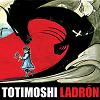 This album is a collection of songs that musically are on the listenable side of mediocre but are let down by poor vocals. It’s obvious they’re aspiring to being underground metal titans like the Melvins or High on Fire but they aren’t showing much promise. Ladrón is the sound of competent musicians capable of throwing together pretty good songs but lack the spark of excitement to set them apart from their peers.
This album is a collection of songs that musically are on the listenable side of mediocre but are let down by poor vocals. It’s obvious they’re aspiring to being underground metal titans like the Melvins or High on Fire but they aren’t showing much promise. Ladrón is the sound of competent musicians capable of throwing together pretty good songs but lack the spark of excitement to set them apart from their peers.
I was heavily disappointed with this album on my first listen, the band’s name and the Manga vibes from the cover made me think this was going to be another great rock band from Japan but I was fooled. The band hail from California and they sound like many of California’s early '90s alt-rock bands. This is probably in no small part due to Helmet’s Page Hamilton production. While I am a fan of Helmet, considering their recent return to the studio gave such discouraging results I would be wary that Hamilton may be past his creative prime. The unimaginative take on heavy-ish rock on display here confirms my worries; it sounds like they simply went into the studio and told the engineer that they wanted to sound like Seattle, 1990. Songs like “In Virgo” or “The Hide” could have been from the cutting room floor of any American guitar band from 15 years ago.
The music isn’t bad; but too derivative for my tastes. Totimoshi aren’t as heavy as they like to think (at least not in the studio) but they are at least a change from the two beat per minute sludge and doom bands that have spread like wildfire over the last few years. There are a couple of tasteful, simple guitar licks dotted throughout the album (like the opening to “Viva Zapata”) and the riffs are straightforward and uncomplicated. I can at least appreciate them for the way they’re put together.
Antonio Aguilar can play guitar but his style of singing is awful. He sounds like someone with a good voice but trying far too hard to be distinctive. He tries to sound pained and menacing but it ends up sounds cartoonish. If he wasn’t as rough sounding I would probably stick this album on more often than I will. On “These Meanings” he doesn’t try to sound like snarling rock star and while his voice is quite pleasant, it’s a shame that this is the only track that he does this.
Ladrón is not a terrible album but it suffers from the fact that the music, although proficiently played, isn’t that interesting and the parts that are worth listening to tend to be obscured by singing that doesn’t fit with it. This could have been an album with the potential for mass appeal as it is very radio friendly but unfortunately it is too uninspired to stand above the crowd.
samples:
Read More
- Duncan Edwards
- Albums and Singles
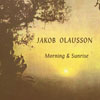 Jakob Olausson follows up his acclaimed album Moonlight Farm with another entrancing record. Its hypnotic quality comes partly from song structures which seem looser than they actually are, and from the stark contrast between emotionally raw lyrics, some sparkling guitar notes, and his doubled or heavily echoed voice.
Jakob Olausson follows up his acclaimed album Moonlight Farm with another entrancing record. Its hypnotic quality comes partly from song structures which seem looser than they actually are, and from the stark contrast between emotionally raw lyrics, some sparkling guitar notes, and his doubled or heavily echoed voice.
Morning & Sunrise doesn’t appear to start at the beginning as much as drop into something that is already in motion. I like the strange sense, as "Don’t Drown In Sorrows" bursts in, almost of leaping onto a slow-moving boxcar in the middle of a long train journey. Much of Moonlight Farm lived up to its title by appearing to transmit cosmic vibrations from a field of beet in the middle of a cold night. This new release has a hazy warmer feel to it and, perhaps since Olausson has toured the US, to some extent it’s as if he is flirting with influences on this side of the Atlantic. "Ride On The Wind" for example has a trace of the ghost of Montezuma about it (echoing a little of Neil Young’s "Cortez The Killer"). Other sections of these eight songs could be snapshots from rides through the Delta or approaches to the outskirts of a folk-psychedelic version of Northern California, except that Olausson is not like a tourist trying on silly hats and references are never that blatant. Instead, all is subsumed beneath his almost gamelan-like mode of expression.
In that expression, his voice is echoing, swaying, resting, and playing catch-up, his guitar notes are aching with loneliness, and the bleak percussion is either ticking like a clock of mortality or disappearing completely. If that sounds heavy or messy and dense, well, there are moments of anguish but many of ecstatic howling coalescence. And there is also plenty of open space. It’s as if a train goes through a tunnel causing the music to sound darker and more intense, but it comes out the other side and in sweeps air and light.
Olausson's lyrical concerns are to do with surviving emotional fevers and freezes, getting through to the other side of the inevitable winters of life. He literally howled like a choir of wolves on one track from Moonlight Farm and his superb whistling here on "When Your Bridges Burned" adds another simple yet very effective flourish. Just as the late Joe Meek struggled and fumbled his sonic visions into being, so Jakob Olausson wrestles to create with whatever is to hand. Oddly, though, as much as I will be pleased to hear his next record I would be fascinated to hear his songs performed by other artists.
Read More
- Administrator
- Albums and Singles
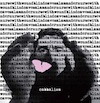 This live recording from 2009 sees Steven Stapleton and Colin Potter team up with Fabrizio Palumbo, Paul Beauchamp and Julia Kent to perform one of, if not, the classic Nurse With Wound album Soliloquy for Lilith. I cannot pretend that they have succeeded in recreating that amazing work but they have made something equally engaging if aesthetically different to the original. Stapleton is still acting as an aerial or a receiver for the basic sound but the other players build on it to form an entirely novel and separate entity.
This live recording from 2009 sees Steven Stapleton and Colin Potter team up with Fabrizio Palumbo, Paul Beauchamp and Julia Kent to perform one of, if not, the classic Nurse With Wound album Soliloquy for Lilith. I cannot pretend that they have succeeded in recreating that amazing work but they have made something equally engaging if aesthetically different to the original. Stapleton is still acting as an aerial or a receiver for the basic sound but the other players build on it to form an entirely novel and separate entity.
 
The original recordings of Soliloquy for Lilith involved Stapleton playing the electromagnetic fields of various guitar effects pedals like a Theremin. The end result was something akin to a transmission from space, indecipherable but strangely calming. The album has always been a favorite of Stapleton due to the fact that it seemed less like a composition of his own and more of a recording of something else, something beyond the creative process (very much from the same space as Coil’s Worship the Glitch album).
With all this in mind, I was surprised when a few years ago he started performing Soliloquy for Lilith live. I could not envisage how these otherworldly sounds would translate to a concert hall, especially as Nurse With Wound were performing it with Blind Cave Salamander. Listening to Cabbalism now, the answer is that it is little like Soliloquy for Lilith but a whole new work stemming from the same basic premise. The ghostly murmurs from the guitar effects pedals are still there but are pushed back in the mix with the other musicians complementing Stapleton with regular instrumentation and electronics. Barely-there guitar, sweeps of abstracted sound and distant hums of bass tones create a distinct and unexpected world.
However, it is Kent’s cello that brings this piece from being just another Space Music-esque work (though there is nothing wrong with that). Her rich, poignant notes push through the acoustic ephemera. A small amount of echo gives her playing a detached quality, almost as if she is jamming with the reverberations of the cosmos. On the second side of the LP, her playing takes on a Middle Eastern lilt; an odd but effective fit. When high-pitched whines (from Potter’s box of tricks? from Beauchamp’s musical saw? from the Horsehead Nebula?) join her playing near the end, it is a glorious and transcendental moment.
Yet, this is just one of many such moments dotted throughout Cabbalism. Some feel more minor than others but they add up, cumulatively reinforcing the effect of each tiny particle of sound. I seem to say this about most Nurse With Wound-related releases these days but this is one of Stapleton’s best. I honestly think he is on a roll these last few years and obviously constantly changing up his collaborators is a solid move on his part.
 
Read More
- Administrator
- Albums and Singles
 Despite a career spanning decades as both a performer and music theorist, Ustad Abdul Karim Khan rarely played in front of a microphone. This album is just an instance in his artistic life, recorded in Bombay only a handful of years before his death but it shows a singer in his prime. His command of his voice and reverence for his art comes through the fog of the 78 recordings with a vigor undiminished by time or culture.
Despite a career spanning decades as both a performer and music theorist, Ustad Abdul Karim Khan rarely played in front of a microphone. This album is just an instance in his artistic life, recorded in Bombay only a handful of years before his death but it shows a singer in his prime. His command of his voice and reverence for his art comes through the fog of the 78 recordings with a vigor undiminished by time or culture.
I was surprised by Important Records’ move to release a compilation of Indian classical music recorded in the ‘30s. While the influence of such music on 20th century composition is considerable, particularly on such touchstones of minimalism such as La Monte Young and Terry Riley, it still seems like a leftfield release for Important. My knowledge of Indian classical music is limited but Ustad Abdul Karim Khan’s style sounds quite different to the few Indian artists I would be familiar with. The earthy vocals of Pandit Pran Nath or Amir Khan are a far cry from Kamir Khan’s almost androgynous voice. His voice lifts the words up on a cloud to the heavens whereas the Ragas that usually get played in my house tend to swallow up the ground.
Unfortunately, due to recording limitations at the time, the pieces clock in at around four minutes each; there are no lengthy explorations of the various pieces. Yet, in such short bursts, Kamir Khan demonstrates his vast skill with an almost superhuman capacity to dance across the complex scales like ordinary singers do with a simple "do re mi." Performing the Jhinjhoti raga "Piya bin nahin avata chain," Kamir Khan sounds like a celestial being. His voice, radiant and light, twists impossibly through the quick delivery of the words. It is utterly intoxicating. Elsewhere, his haunting performance on "Jamuna ke tira kanha" shows his deep control of his singing and demonstrates the powerful emotional content of this music.
In addition to Kamir Khan’s inimitable voice, he is joined by a group of equally talented musicians. Two tampuras and a tabla form the base of many of the works; the drone of the tampuras insistent and steady, filling in the gaps where Kamir Khan’s voice cannot reach. Yet it is Shankarrao Kapileshwari’s harmonium that stands out throughout 1934-1935; his playing closely follows Kamir Khan’s vocal acrobatics, at times slow and monolithic but Kapileshwari can really move when he needs to. The album finishes with "Nach sundari karun kopa," a Sindhi Kafi raga that stands out stylistically from the others in this collection. The recording documents an ecstatic symbiosis of men and music; all performers coming together and rendering the notes and rhythms into something godly.
While these recordings have been made commercially available in India, this is the first time they have been widely available in the west. Despite the age of the recordings and the fact that many original recordings from the same time were destroyed during World War II (they were made by a German recording company, Odeon), these have survived and have been restored to a point where they sound as good as they possibly can get. Bundled with the CD is a booklet containing a detailed essay on Karim Khan and the recording industry in 1930s India, altogether it is a fantastic release and I can only hope that this is the first of many similar albums from Important.
samples:
- Gujri Todi: "Beguna gunga ga" (drut)
- Gujri Todi tartan: "Dim Dara Dir Dir"
- Sindhi Kafi: "Nach sundari karun kopa" (ektal)
 
Read More
- Administrator
- Albums and Singles
![]()
As one of many of Dominick Fernow's many aliases, the debut of Vatican Shadow in 2010 could have ended up another one-off project to never be heard from again. However, going in a rhythmic direction rather than just harsh noise made for a project that stood out among its peers. Here, the second release and first full length is re-released on vinyl with a significant leap in sound quality.
The rhythmic direction that Prurient went in on Bermuda Drain and Time's Arrow was attributed by a lot of people to Fernow's membership in Cold Cave, but those seeds were sown back on the first VS release, Byzantine Private CIA (which is also slated for a vinyl reissue in the near future).Kneel Before Religious Icons is the first actual album, and like many Hospital releases, it was released in confounding format (four C10 tapes) and in an absurdly limited 33 copies, keeping out of reach of everyone except label obsessives and those who troll less than legitimate blog sites.
With a greater recognition from the less limited VS releases from late last year, as well as the parallels with recent Prurient, the project has received greater attention, and deservedly so.Here on vinyl for the first time, the sound is great, a lot more so than the original tapes, and also the music simply benefits from the warm, crackling ambience of vinyl.
From the Middle Eastern imagery and looped, rhythmic structures, Vatican Shadow has been frequently criticized as ripping off Muslimgauze, and while there are definitely similarities, the two projects are rather different from each other.VS has far more in common with the second generation of electronic industrial music (when it became danceable) than Bryn Jones' lo-fi endeavors.
"Chopper Crash Marines' Names Released" and "God's Representative on Earth" are both based on repetitive, metallic drum loops and pensive synth strings buried in the mix, balancing the melody with the clanking percussion and crunchy distortion.It's on tracks like "Harbingers of Things to Come" that the actual parallels to Muslimgauze appear, with Middle Eastern tinged FM synths and crackling rhythms.
On "Shooter in the Same Uniform as the Soldiers" and "Church of All Images," the beats are much more danceable, exemplified by the booming bass on the former and more diverse loop juggling on the latter, keeping both fresh and compelling.The more sparse and erratic structure and loping beats on "Final Victory:Christ Became a Man and had Truly Assumed Human Nature" hint at the direction the project has gone in more recently, focusing less on repetition and more on structural variation.
Being that they're all made up of repeating loops, the eight tracks that album are pretty repetitive, with most songs abruptly starting and stopping seemingly at random.It definitely conveys a specific mood, one of tension and conspiracy that would work well as film or TV backing tracks, but strong enough to stand on their own.With its similarity between tracks and repetitive nature, this is just the right length work to keep things fresh, and the mastering for vinyl is a dramatic step up from the original tapes.Of all of Fernow's projects, this one has been the most captivating since I first heard it, so I’m eager to hear what new work this wider exposure may lead to.
samples:
 
Read More
- Administrator
- Albums and Singles
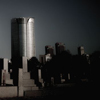 As much as I enjoy all of the musicians involved, the recently reincarnated Fenn O'Berg has thus far failed to recapture the deranged magic of their early years for me.  They can still be quite good though (and occasionally surprising).  These recordings from their 2010 Japanese tour share some of the muted, brooding tone of 2010's In Stereo, but also demonstrate that this laptop trio has not entirely abandoned their more wild, spontaneous, and absurdist tendencies.  I'm not sure if that necessarily makes In Hell stronger than its predecessor, but it at least seems a bit more striking and memorable.
As much as I enjoy all of the musicians involved, the recently reincarnated Fenn O'Berg has thus far failed to recapture the deranged magic of their early years for me.  They can still be quite good though (and occasionally surprising).  These recordings from their 2010 Japanese tour share some of the muted, brooding tone of 2010's In Stereo, but also demonstrate that this laptop trio has not entirely abandoned their more wild, spontaneous, and absurdist tendencies.  I'm not sure if that necessarily makes In Hell stronger than its predecessor, but it at least seems a bit more striking and memorable.
In Hell reminds me of the folksy, hackneyed joke "if you don't like the weather in _____, wait five minutes!" due to its unstable, constantly shifting nature.  Despite that endless flux, however, these five pieces evoke an omnipresent mood of uneasiness, coldness, and dislocation that make the album title seem like an extraordinarily apt one.  In fact, one the closest stylistic reference points for Fenn O'Berg at this point seems to be the 20th century classical music avant-garde, as several passages sound queasily and dissonantly Morton Feldman-esque and disruptions by musique concrète-style found sounds are rampant.  Or maybe it just sounds like The Caretaker fed into a malfunctioning blender that turns itself off and on at its own whim.  There are certainly some flashes of humor hidden amidst all the alienation, like the funky and cartoonish vamp at the end of "Vampires of Hondori," but the gravity and dark tone of the surrounding material imbues them with perverse seriousness.
In any case, this album is essentially a simmering stew of minimal and disquieting musical passages constantly being augmented, consumed, or derailed by a host of buzzes, squelches, whines, crackles, bleeps, bloops, crunches, hums, and violent processing changes.  The two shorter pieces ("Omuta Elegy" and "Concrete Onions") seem to somehow maintain a linear arc of sorts, but the lengthier ones tend to end up in a very different place than they started.  The aforementioned "Vampires," for example, veers into space-y synthesizer ambiance, goofy funk, something that sounds like being enveloped by a swarm of digitized birds, an approximation of a lonely violist playing an out-of-tune instrument in hell, and something that sounds like the very fabric of the universe being ripped apart over the course of its 18-minute duration.  There's even some classic rock buried in there too.
For me, Fenn O'Berg's zenith will always be 1999's "Fenn O'Berg Theme," which perfectly blended a smokey, noirish motif with digitized, laptop chaos.  My main issue with the recently reanimated Fenn O'Berg is the absence of any similarly strong themes.  They seem to be "composing" by bouncing ideas off of each other until something coheres rather than gleefully mangling a strong, pre-existing motif.  As a result, their recent work seems to be more sophisticated, uncompromising, and daringly improvised, but the trade-off is that the relative hooklessness and amorphousness make it a less accessible and increasingly self-indulgent affair.  In fact, it's kind of analogous to shifting from bebop to free jazz: there is no decline in inspiration or vision, but it is quite a bit harder on the ears.  Consequently, their appeal for me these days is largely a cerebral one–I am fascinated by how these three unpredictable artists interact with one another and deal with amusing curveballs (like the abrupt appearance of Boston's "More Than a Feeling" in "Christian Rocks"), but I definitely wish there was sturdier structure and melodic content holding it all together.
Samples:
 
Read More


